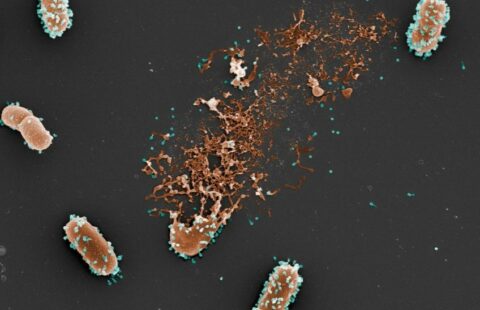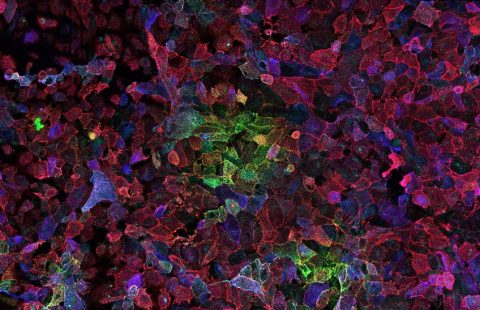How is it that certain patients infected by HIV have immune cells that are capable of controlling the infection? Victor Appay, INSERM Research Director (Mixed INSERM Research Unit 945 “ Immunity and Infection” / Université Pierre and Marie Curie / Hôpital Pitié-Salpêtrière (AP-HP)) and his colleagues have succeeded in identifying the molecular characteristics of certain T lymphocytes that have the specific property of being able to detect and control HIV and its mutant versions. Their work was published in 22 March 2013 in the Immunity journal and has received support from the ANRS.
Today, according to the OMS, 34 million people are infected with HIV, yet only 1.3 million sufferers in the poorest countries are being treated and 6,800 people a day are infected by HIV.
The Human Immunodificiency Virus (HIV) attacks the cells of the immune system and destroys them or renders them ineffectual. Acquired Immunodeficiency Syndrome (AIDS) is the final stage in HIV infection. It may appear after 10 to 15 years.
The inherent danger in a virus lies very much in its ability to develop multiple strategies to escape detection by the immune system. HIV is no exception to the rule. HIV is known to mutate and adapt in each individual and his/her major histocompatibility complex (MHC).
HIV is a good example of how a pathogenic agent can evolve and mutate by creating what is known as a new variant, in order to circumvent its host’s immune system.
In certain cases, however, the immune system is able to react to control these mutant pathogens.
The molecular basis of the process has not been clearly established hitherto, but this is what researchers have now been able to do. Their work makes it easier to under the mutual adaptation mechanism between the immune system and HIV.
In order to better understand how HIV works, Victor Appay, INSERM Research Director, in collaboration with his colleagues at Cardiff University (United Kingdom), Kumamoto University (Japan) and Monash University (Australia), and with the support of the ANRS, studied the cells of patients whose immune response proved effective against the virus and its variants. These patients, all of them from the ANRS Primary Infection cohort, were monitored from the time primary infection with HIV was diagnosed. The detailed study focused on the response caused by the T CD8+ lymphocytes of patients infected by HIV and in whom these cells were particularly well preserved and functional.
In other words, these cells not only managed to control and reduce the replication of HIV but even of its variants, something that is not the case in patients who develop the full-blown disease.
This protective immune response is possible due to certain T CD8+ lymphocytes, that are known as “cross reactive”. They have a receptor on the surface whose structure gives then the special ability to recognise not only the non-mutant virus but even its mutant variants. This discovery is the first to really pinpoint how HIV can be controlled by certain T CD8+ lymphocytes.
The study highlights the complexity of the forces and mechanisms that lead to the development of the virus and the way it alters the immune system during the course of HIV infection. A better understanding of immunological determinants as the basis for control of replication of HIV is essential for the development of effective vaccines. In fact, the choice between immunogens and adjuvants in the development of vaccines against HIV needs to be rationalised in order to encourage the production of T CD8+ lymphocytes that are particularly skilled at recognising the wilder and mutant forms of the virus.

